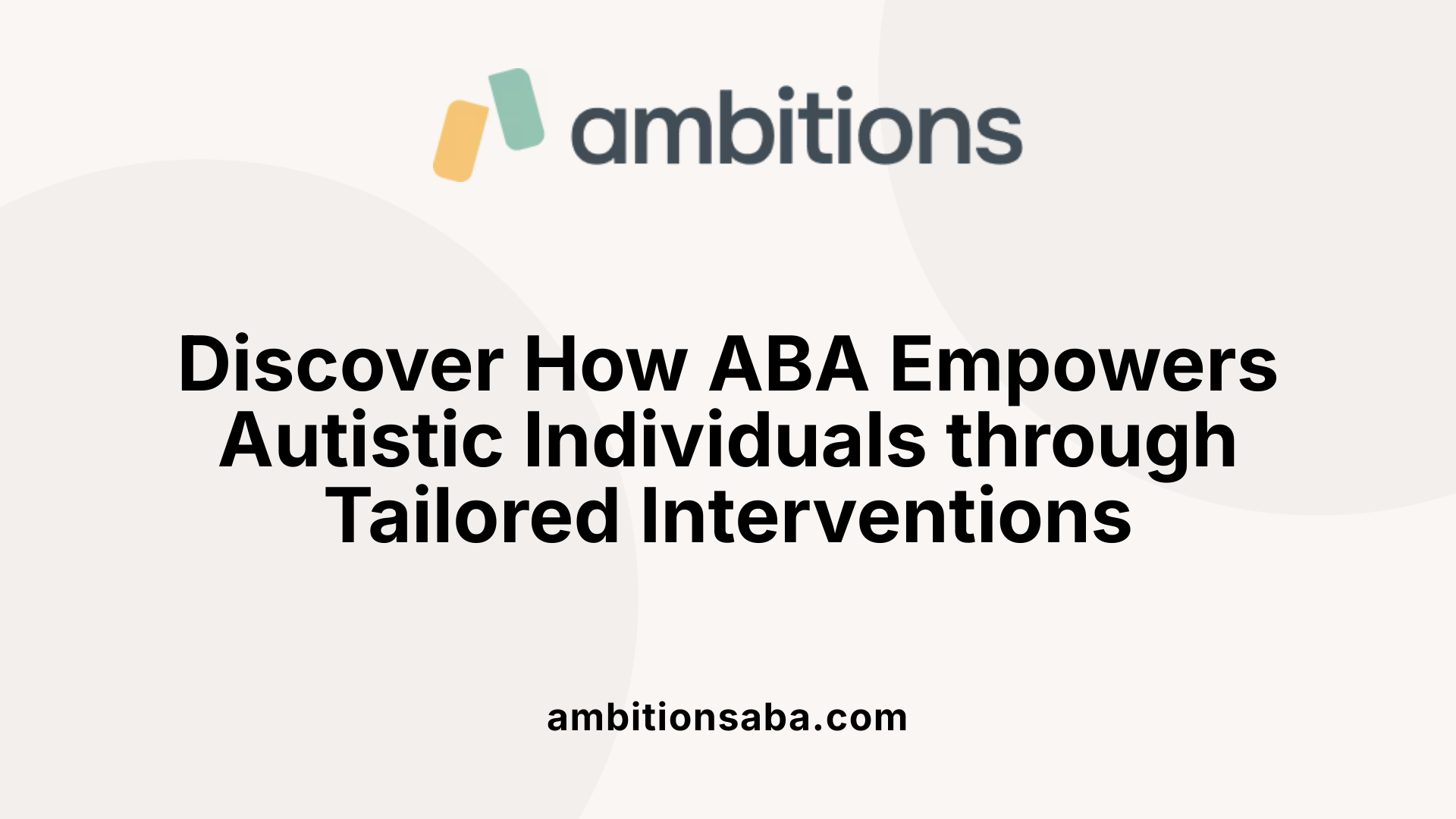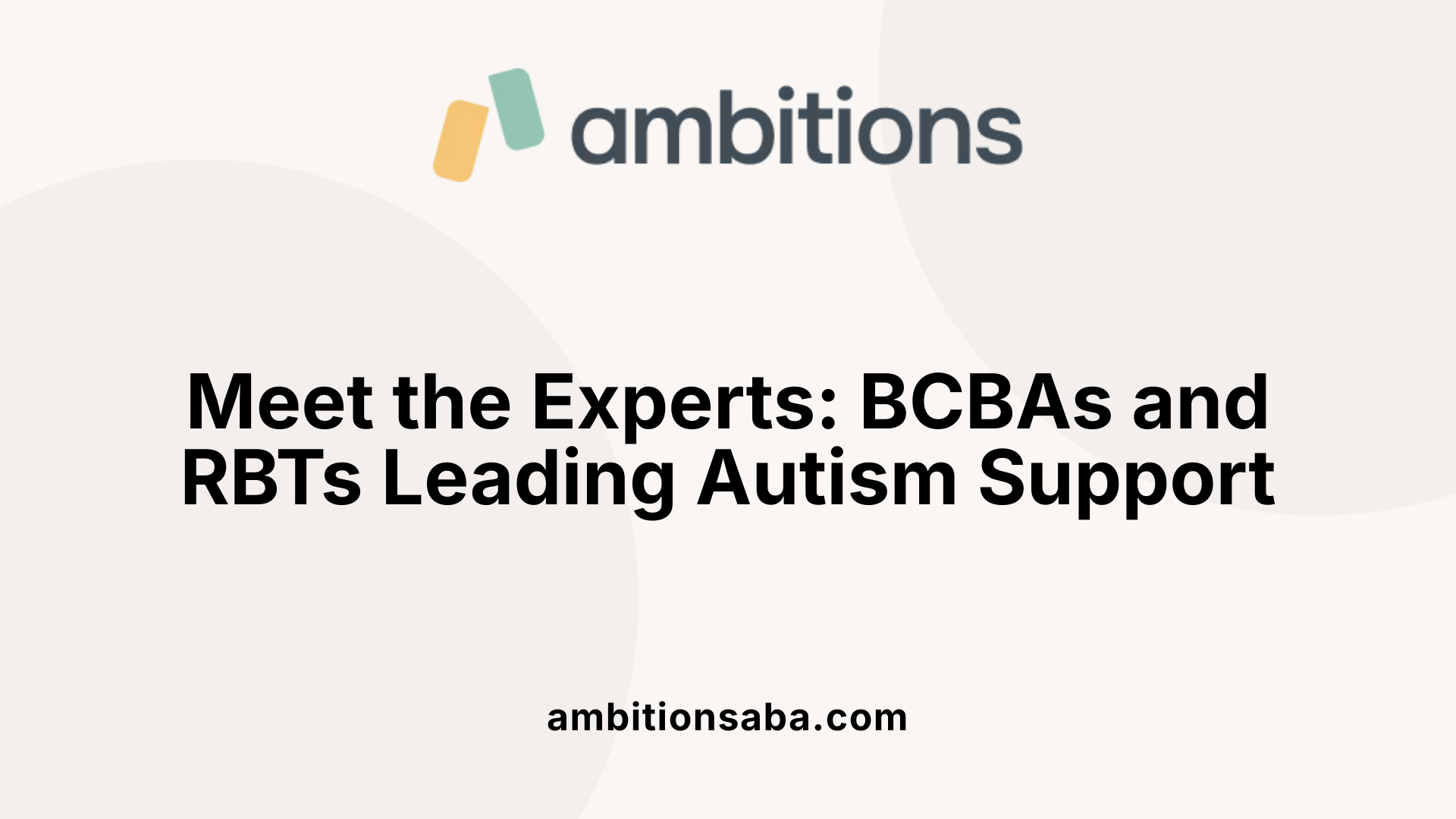Empowering Children with Autism to Navigate the Digital World Safely
Unlocking Daily Living Skills Through Structured Intervention
Applied Behavior Analysis (ABA) therapy has become a cornerstone in supporting individuals with autism to develop vital self-help skills that promote independence and enhance quality of life. One fundamental area where ABA demonstrates significant impact is in teaching daily routines such as toothbrushing. This article explores how ABA therapy systematically breaks down complex self-care behaviors, implements targeted strategies, and involves families to nurture autonomy in everyday tasks.
Understanding ABA Therapy and Its Role in Autism Support

What is Applied Behavior Analysis (ABA) therapy, and how is it used to support individuals with autism?
Applied Behavior Analysis (ABA) therapy is a research-based method that helps improve skills in people with autism by applying learning principles and behavior strategies. It uses structured, individualized approaches designed by Board Certified Behavior Analysts (BCBAs) to target essential areas like communication, social skills, and daily living tasks.
ABA breaks complex behaviors into simple steps, employing techniques such as positive reinforcement—where desired behaviors are rewarded to encourage repetition—and prompting, which gradually fades as the person becomes more independent. Key tools include task analysis, chaining, and generalization to ensure skills are learned and applied in various real-life contexts.
ABA also uses the antecedent-behavior-consequence (A-B-C) framework to understand and address behaviors by identifying what leads to and follows them. Continuous data collection allows professionals to tailor programs according to progress.
The therapy often starts with home-based plans where therapists or Registered Behavior Technicians (RBTs) work closely with families to set meaningful goals that improve the individual's independence and quality of life. The focus is on building skills that are important and functional, such as morning routines, self-care, money management, and transportation.
Overall, ABA therapy is highly effective in supporting individuals with autism, promoting their participation and independence through consistent practice, patience, and personalized strategies.
Key Professionals Behind ABA Therapy Delivery

Who provides ABA therapy, and what qualifications do these professionals typically have?
ABA therapy is delivered by knowledgeable and trained professionals including Board Certified Behavior Analysts (BCBAs) and Registered Behavior Technicians (RBTs). BCBAs are highly qualified experts who have advanced degrees in fields like behavior analysis or psychology. They also pass certification exams to validate their expertise and competence in applied behavior analysis. On the other hand, RBTs hold paraprofessional certification following completion of specific training programs and supervised practical experience.
Settings where ABA is implemented
ABA therapy is versatile and implemented across various environments. These settings include clinical centers, schools, and increasingly within clients’ homes. Home-based ABA therapy is especially valuable as it allows skills to be practiced in real-life contexts, facilitating faster learning and greater generalization to daily routines.
Team-based approach to individualized care
ABA therapy often involves a team of professionals working collaboratively to create and execute individualized intervention plans. BCBAs typically oversee assessment, goal setting, and treatment design, while RBTs carry out day-to-day therapy sessions. This team-based approach ensures that interventions are personalized, data-driven, and adjusted as needed to meet each client’s unique needs and promote their independence and quality of life.
Assessment and Planning for Self-Help Skill Development

What is the typical process for assessing and developing an ABA therapy program for someone with autism?
Assessment in ABA therapy typically begins with a thorough evaluation of the individual's current skills and behaviors using formal tools such as the VB-MAPP, ABLLS-R, and Vineland scales, along with functional behavior assessments (FBA). These assessments help identify the learner's strengths, areas needing support, and the underlying functions of behaviors.
Parents and caregivers play a vital role by providing detailed information through interviews and observations, which complements direct engagement assessments with the individual. Their insights ensure that goals are relevant and meaningful to the individual's daily life.
Once the baseline data are collected, behavior analysts set measurable and individualized goals focused on developing self-help and daily living skills. These goals prioritize independence by breaking complex tasks into manageable steps using techniques like task analysis.
The intervention plan incorporates evidence-based ABA strategies, such as prompting, reinforcement, shaping, and visual supports. Goals are practiced frequently across natural environments like home and community to promote generalization and sustained independence.
Ongoing data collection allows continuous monitoring of progress, guiding adjustments to the therapy plan. Regular re-assessments help refine goals to align with the individual's development and family's priorities.
Engaging parents through training empowers them to implement strategies consistently, reinforcing newly acquired skills across settings. This collaborative approach maximizes the effectiveness of ABA therapy in promoting meaningful self-help skill development and enhancing quality of life.
Teaching Self-Help Skills Using ABA Techniques

How does task analysis break down skills?
Task analysis is a fundamental ABA technique that divides complex self-help tasks into smaller, manageable steps. For example, toothbrushing is broken down into wetting the toothbrush, applying toothpaste, brushing each section of teeth, rinsing, and putting the brush away. This stepwise approach allows for easier teaching, monitoring, and progress tracking. It also helps identify specific stages where the learner may need extra support or intervention.
What role do prompting and fading play in promoting independence?
Prompting is used to guide children through each step of a task, often with physical assistance or verbal cues. Initially, prompts help the learner complete steps successfully, fostering confidence. Over time, prompting is gradually faded to encourage independence, allowing the child to perform tasks without assistance. This systematic reduction helps ensure that the skills are mastered rather than becoming dependent on prompts.
How are reinforcement strategies used to motivate learning?
Positive reinforcement is vital in ABA therapy. When a child completes a step or entire task correctly, they receive encouraging praise, access to preferred items, or enjoyable activities. This reinforcement increases motivation and the likelihood of repeating the behavior. Additionally, frequent, short practice sessions with predictable reinforcement help maintain engagement and support skill acquisition in daily routines.
Combining task analysis, prompting/fading, and reinforcement creates a structured yet supportive environment. This ABA framework enables children to gradually gain independence in essential self-help skills like dressing, toothbrushing, and handwashing, improving their confidence and overall quality of life.
Generalization and Natural Environment Training of Skills like Toothbrushing

Why Practice Self-Care Skills in Real-Life Settings?
Practicing self-care activities such as toothbrushing in real-life settings is essential for mastering these skills. ABA therapy emphasizes applying learned tasks in environments like the bathroom or kitchen, which helps individuals transfer skills from therapy sessions to daily life. This natural environment training supports greater independence and confidence.
How Do Visual Supports Facilitate Learning?
Visual aids like picture schedules and labeled cues serve as effective tools during self-care routines. These supports guide individuals step-by-step through tasks such as brushing teeth, enabling them to follow the routine more independently. Visual schedules also reduce confusion and increase engagement by providing clear expectations.
What Role Does Practice Frequency and Consistency Play?
ABA therapy advocates for frequent, short practice sessions, ideally 3-5 times per week, to promote skill acquisition and maintenance. Consistency in scheduling and reinforcement helps solidify routines and encourages gradual independence. Patience and repetitive practice are key in ensuring the successful generalization of skills across various settings and situations.
Parent and Caregiver Involvement in Supporting Self-Help Skill Mastery
How Do Parent Training Techniques Facilitate Self-Help Skill Development?
Parents play a crucial role in reinforcing and supporting their child's learning in ABA therapy. Techniques such as modeling, where caregivers demonstrate the target behavior, and reinforcement, where positive rewards encourage skill acquisition, are central. Additionally, imitation training helps children copy behaviors, creating natural learning opportunities.
What Are the Benefits of Home-Based ABA Therapy?
Home-based ABA therapy offers a familiar environment for skill practice, which enhances comfort and learning speed. This setting allows therapists to tailor interventions to real-life scenarios, promoting rapid generalization of skills. Moreover, parental involvement is naturally increased, enabling consistent practice outside therapy sessions, which reinforces progress.
How Can Strategies Reduce Response Effort and Promote Independence?
To encourage independence, ABA strategies focus on minimizing the effort required for children to respond correctly. This includes breaking tasks into manageable steps through task analysis and using visual supports like picture schedules. Employing gentle prompts that fade over time allows children to increasingly perform tasks on their own, fostering confidence and reducing frustration.
Addressing Controversies and Emphasizing Ethical ABA Practice
Are there any controversies or criticisms related to ABA therapy for autism?
ABA therapy has faced some historical controversies and criticisms, largely due to early versions that sometimes used aversive methods like punishment or shock. These harsh techniques contributed to concerns about ABA programs being overly rigid and prioritizing compliance over the child's emotional health and autonomy.
In recent years, ABA has shifted toward more ethical and person-centered approaches. Modern ABA uses positive reinforcement, naturalistic teaching methods, and individualized goals that respect the child's preferences and comfort. These changes aim to create a supportive environment that encourages learning and independence while minimizing stress.
Some critics remain cautious about ABA because they feel it may overlook the neurodiversity perspective, which embraces autistic differences rather than trying to normalize behavior. However, many ABA professionals actively balance behavioral goals with respecting neurodiversity, tailoring interventions to each individual's unique needs.
Ultimately, ethical ABA practice focuses on enhancing quality of life without compromising the child's emotional well-being. It continually evolves by incorporating feedback from families, caregivers, and autistic individuals, striving to maintain respect and dignity throughout therapy.
Fostering Independence Through Consistent and Compassionate ABA Support
ABA therapy plays a vital role in empowering individuals with autism to master self-help skills that are crucial for daily living and overall independence. Through evidence-based strategies such as task analysis, prompting, and reinforcement — combined with personalized goal setting and active caregiver involvement — ABA builds confidence and competence in tasks like toothbrushing, dressing, and grooming. While respecting individual differences and addressing past criticisms, contemporary ABA prioritizes ethical, positive, and person-centered methods. Ultimately, its structured yet adaptable approach fosters meaningful progress that enhances quality of life and supports lifelong independence.
References
- How ABA Therapy Helps Build Daily Living Skills
- How Can I Promote Self-Help Skills in Clients with Autism?
- How to Build Independent Living Skills With Autism
- ABA Therapy for Self-Care Skills in Children
- Applied Behavior Analysis (ABA)
- ABA Therapy Goals: 25 Practical Examples & Timelines
- Applied Behavior Analysis (ABA)
- Who Qualifies for ABA Therapy: Eligibility Guide
- The Controversy Around ABA
- Debunking 7 Common Myths About ABA Therapy - GSEP Blog

